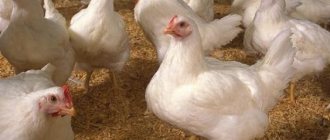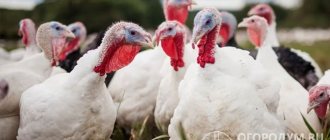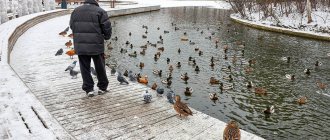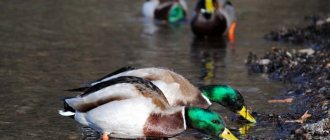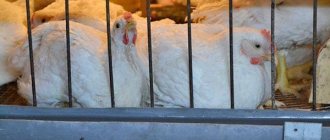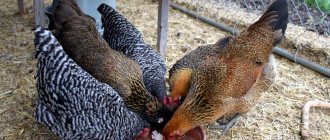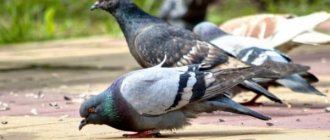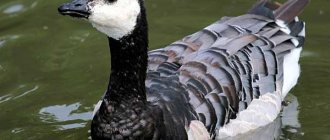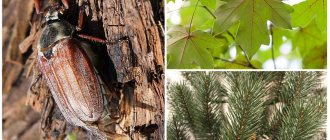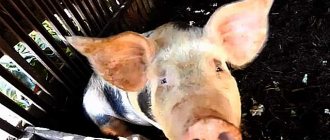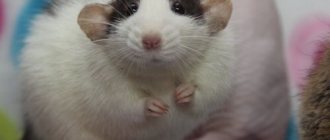Cereals in the diet of ducks
The basis of duck food is cereals
The basis of food for any poultry, including ducks, is cereals. They contain a lot of carbohydrates, proteins, fiber and therefore have a positive effect on the bird’s weight gain. But what can you feed ducks from grain crops?
- Wheat is the simplest, most common product available for sale. It is useful, but you can feed no more than 30% of the total mass of feed.
- Corn is easily digestible, but can cause obesity. Ducks love it and eat it with great eagerness. It contains many vitamins, minerals and other beneficial substances. Corn can be given in amounts up to 50% of the total food.
Important! Cereals are given crushed, but not too much. Small debris can become clogged and stick together in the bird’s nasal openings.[/su_box]
- Oats contain up to 5% fat and 15% protein. It is healthy and promotes rapid weight gain. This grain is usually used for fattening, but can also be added to a simple diet. Only peeled oats are given, without shell.
Is it possible to give barley to ducks?
Also check out these articles
- Tomato variety Lady fingers
- Lightly salted cucumbers with dill
- Apple tree varieties for the Leningrad region
- Melon planting
Approximate diet for ducklings for meat, g per day
Many young breeders wonder whether it is possible to feed barley to ducks. This is a coarse grain, but it is easily digested in the duck’s stomach and therefore can account for up to 30% of the total weight of food.
To ensure that barley is well absorbed and does not cause stomach problems, birds are given it peeled from the shell. It also wouldn’t hurt to crush it or germinate it. Sometimes breeders simply soak the barley to soften it.
Advantages of the breed
Average live weight of ducklings and nutritional standards
Although large farms do not breed turkey ducks, they are a popular bird in country houses. The breed has many positive characteristics that make the duck better than other breeds.
- Duck meat tastes like broiler meat.
- The fat content in the carcass is minimal, which makes it a dietary product.
Pregnant women, children, and the elderly can eat turkey meat. Calculation of production and economic indicators - This is a fairly silent breed that does not vocalize. Males hiss very quietly. For this feature, ducks are often called “mute ducks.”
- The female is able to hatch chicks on her own, which significantly saves physical costs. With natural hatching, the survival rate of young animals is almost 100%.
- Excellent egg production; a brood can be produced twice a season from one female.
- At one month of age, males are easily distinguished from females. They are much larger.
- The duck takes root well even in harsh climates. It tolerates cold well and does not require additional heating.
Is it possible to feed ducks peas?
Knowing what you can feed ducks, you can create a varied, healthy diet. Peas contain an abundance of nutrients, but can you feed them to ducks? Yes, these birds love peas and eat them with pleasure, but before adding them to food, you should first grind them thoroughly.
Important!
Peas for birds are usually given dry, not fresh, from the garden in pods.
Due to the fact that peas contain up to 20% protein, it allows the bird to quickly build muscle mass, but it should be up to 10% in the diet, otherwise stomach problems will begin.
Agricultural waste
We recommend reading our other articles
- Galvanized beds
- Governor's geese
- Description and characteristics of the laying hen incubator
- Shallot
In addition to cereals, it is useful to include waste from the agricultural industry in the diet of ducks. What can you feed ducks using similar products?
- It is very beneficial to use meal or cake for fattening. They are made from canola, soybeans, peanuts, sunflowers or cotton. The abundance of fats and minerals makes these foods healthy, but they may only make up up to 7% of the total daily diet.
- Bran makes up up to 10% of grain flour feed. Essentially, it is waste generated during the production of flour. They can be given no earlier than 20 days of age.
Ducks can also be fed stillage (waste from beets and potatoes during the production of alcohol) and baker's yeast.
Root vegetables and succulent forages
Photo of feeding ducks with duckweed
The warm season is the time for vitamins. Ducks need fresh vegetables, root vegetables, and, of course, greens for normal body function. These products contain nutrients, vitamins, minerals, amino acids - everything you need to improve your productive qualities. However, in the summer season, as well as spring and autumn, you can harm the bird if you give it the wrong thing, so it is important to understand what you can feed ducks and what you can’t.
- Greens should make up approximately 20% of any mash if the bird does not have access to free range at least in an aviary. If there is a range, then you don’t have to put grass in the mash - the bird will find it on its own. Ducks digest pea stalks, alfalfa, clover, and nettles well. They are usually collected and ground up, or simply planted in the aviary so that the birds have access to them.
- Aquatic vegetation is a favorite delicacy for ducks. Plants growing in rivers, lakes, and reservoirs must be present in their diet. And if the bird is not allowed into the pond, it is important to collect such greens yourself and add them to the mash. These herbs include duckweed, elodea, pondweed and some others. Young animals can eat about 15 grams of aquatic greens per day, and adults can eat up to 500 g/day.
Important!
In spring, summer and autumn, keeping poultry is cheaper due to the fact that they find part of the food while walking.
- Root vegetables, namely carrots and boiled beets, must be given with mash throughout the year. In winter they are not difficult to get, but for the bird it will be a real gift. Moreover, feeding vegetables and root vegetables reduces the risk of disease during the cold season.
- Vegetables contain many useful substances. They are added to mash or given separately. Healthy vegetables include cabbage, pumpkin, and zucchini.
In duck and goose farming, the quality of the resulting products largely depends on the correct and scientifically based feeding of this bird.
Ducks have an intense metabolism with a relatively short intestine, so food passes through the digestive tract quickly. However, the digestibility of nutrients in ducklings is 12-15% higher than in chickens, which is facilitated by vigorous peristaltic movements of the intestines and well-developed digestive glands. Ducks make good use of plant-based food.
Geese have a much longer gastrointestinal tract compared to ducks and very developed processes of the cecum, so they digest fiber well (40-50%). Their muscular stomach has a pressure force 2 times greater than that of chickens. All this allows you to include a large amount of grass and succulent feed in the diet of geese. They digest and absorb feed better, and the use of feed energy in geese is 5-12% higher than in chickens. When grazing freely, geese are able to eat up to 2 kg of green food, which significantly reduces the consumption of concentrates and expensive vitamin preparations.
In industrial duck and goose farms, dry and combined types of feeding are used. It is most rational and economical to give granulated feed to young and adult ducks and geese. The size of the granules should be as follows: for ducklings 1-3 weeks of age with a diameter of 2-3 mm, goslings - 2-4, for ducklings and goslings older than 3 weeks of age - 5-6 and 4-8 mm, respectively. For the first 3 days, goslings are fed a mixture consisting of crushed corn or peas (80-85%), grass meal and skimmed milk powder, and ducklings are fed with coarse ground granulated feed for 5-6 days. Then the young animals are given complete feeds that are nutritionally appropriate for their age.
The approximate content of metabolic energy and crude protein for young ducks and geese is 300-310 kcal and 20-23%. Therefore, in the absence of special feed for geese and ducks, PK-5 (starter feed for broiler chickens) is quite suitable.
When intensively rearing ducklings (meat crosses, musk ducks, mulards) and goslings (pedigreed and hybrid), two types of feed are used for meat: for the initial and final periods of rearing. Ducklings up to 2 weeks of age are given compound feed, 100 g of which contains 21% crude protein and 1151 kJ of metabolizable energy. Starting from the 3rd week, they switch to feeding ducklings with low-protein feed (15% crude protein), but at the same time increase the metabolic energy content to 1234 kJ.
Broiler goslings up to 4 weeks of age are given feed containing 20% crude protein and 1213 kJ of metabolizable energy, and from the 5th week until the end of rearing - containing 15% and 1255 kJ, respectively.
When raising replacement young ducks and geese, feeding is standardized according to three age groups: 1-3, 4-8, 9-26 weeks.
In the first growing period (1-3 weeks), feed for Peking ducklings should contain an average level of protein (18%) and metabolic energy (1172 kJ), while for meat cross ducklings - a high level of protein (21%) and average metabolic energy (1109kJ). According to the structure of feed for ducklings up to 3 weeks of age, they consist of 65-75% grain feed, 10-20 - cakes and meals, 4-7 - feed of animal origin, 2 - feed yeast, 2-5 - grass meal and 1-2 % mineral feed. In this case, oats and barley must be sifted to remove the filmy shells.
During the second period of raising replacement ducklings (4-8 weeks), the share of grain feed in compound feed is increased by 5-10%, the share of cake and meal is reduced by 5-15%, and feed of animal origin is reduced by 2 times. The protein level in mixed feed is reduced to 16-17%, and the amount of metabolic energy is increased to 1213-1276 kJ.
And from the 9th week, replacement young ducks are transferred to a diet of reduced nutritional value (14% crude protein, 1088 kJ of metabolizable energy) and a limited feeding regime, in which the daily feed supply is reduced to 230 g/bird.
From 27 weeks of age, replacement ducklings and goslings are transferred to feeding with complete feed for adult birds. The most effective feeds for laying ducks are those containing 16-16.5% crude protein and 1042-1062 kJ of metabolizable energy. Compound feeds of such nutritional value ensure long-term egg production at the level of 66-70%.
The level of protein nutrition of ducks is controlled by the content of a complex of essential amino acids in the feed. If there is a lack of lysine and methionine in the diet, they are added to the norm in the form of synthetic preparations. The ratio of amino acids can be improved by introducing biomass of bacteriological synthesis into the feed (no more than 2-3%).
The need of adult ducks for basic minerals depends on the physiological state and level of egg production of the bird. 100 g of feed should contain 2.5-2.8% calcium and 0.8% phosphorus. Ducks require more vitamin A and niacin and less pantothenic acid than laying hens.
In duck farming, during artificial insemination, drakes are kept separately from ducks and fed ad libitum. 100 g of feed for breeding drakes should contain: crude protein 17%, metabolic energy 1130 kJ, crude fiber 5%, calcium 1.2, phosphorus, 0.8 sodium 0.4%. For 1 ton of feed add: vitamin A 15 million ME, D3 1.5 million ME, E 15 g. Other vitamins and microelements are added according to the standards for adult ducks. If males are obese, the daily supply of compound feed is limited to 200 g.
The composition of feed for adult ducks includes 60-75% grain feed (2-3 types of grain and 5-8% bran), 5-10 - meal, 2-4 - feed of animal origin, 3-4 - feed yeast, 5- 10 - grass meal and 4-6% mineral feed. It is advisable to include feather meal in feed for ducks during the molting process, which contains a lot of cystine, which stimulates feather growth.
Replacement young ducks from one day old to 8 weeks of age are raised on mixed feed of medium nutritional value (1172 kJ) and two levels of protein (20% up to 3 weeks and 18% over 3 weeks), then they are transferred to a reduced level of metabolic energy (1046-1066 kJ ) and crude protein (14%). To do this, diets include up to 30% low-energy feed - oats, bran, grass meal.
Recipes for complete feed for ducklings and adult ducks are given in the table.
Recipes for complete feed for ducks, %
| Components | Age, weeks | |||
| 1-3 | 4-8 | 9-26 | 27 and older | |
| Corn | 10 | 24.5 | 20.5 | 20.5 |
| Wheat | 46.9 | 40 | 15 | 15 |
| Barley | 15 | 6 | 25 | 25 |
| Oats | — | — | 7 | 4 |
| Peas | — | — | — | 3 |
| Wheat bran | — | — | 10 | 15 |
| Sunflower meal | 9 | 15 | 3.6 | 3.6 |
| Feed yeast | 7 | 2 | 5 | 2 |
| Chalk, shell | 2 | 2.7 | 2.6 | 2.6 |
| Table salt | 0.1 | 0.2 | 0.5 | 0.5 |
| 100 g of feed contains, %: Metabolic energy kJ | 1182 | 1167 | 1064 | 1066 |
| Crude protein | 20 | 18.1 | 14.4 | 14.6 |
| Crude fiber | 3.3 | 5.5 | 7.0 | 6.0 |
| calcium | 1.44 | 1.57 | 1.3 | 1.44 |
| phosphorus | 0.89 | 0.8 | 0.6 | 0.78 |
| Sodium | 0.38 | 0.39 | 0.3 | 0.63 |
| Lisina | 1.02 | 0.76 | 0.61 | 0.63 |
During the breeding season, it is unacceptable for geese to sharply reduce or increase feed energy. With low nutritional value of feed (less than 1000 kJ/100g), geese reduce live weight and productivity; with high nutritional value (more than 1170 kJ/100g), they experience obesity and decreased egg production. During the productive period, feed consumption per head. per day averages 330 g.
The quality of feeding of waterfowl at different age periods is controlled by live weight, productivity, quality of hatching eggs, egg hatchability and amount of feed consumed.
With a combined type of feeding for ducks and geese in the summer, it is advisable to introduce chopped legumes and cereal herbs, various root vegetables, and duckweed into the diet. In winter, they are given combined silage made from carrots, cabbage, pumpkin, other root vegetables containing little fiber, various grain waste, and grass flour.
It has been established that feeding combined silage consisting of carrots (60-70%), green mass of sown herbs, corn, cabbage leaves (20-30%) and grass meal (10%) improves the incubation qualities of eggs and increases the productivity of laying ducks and viability of young animals.
Diets for ducklings up to 3 weeks of age include crushed greens in an amount of 15-20% and over 5 weeks - 40-50% of the dry part. With age, the proportion of green food in the diet increases. Green and succulent feed can be fed separately or mixed with grain and mealy feed or mixed feed. The size of cutting green and succulent feed for ducklings of the first age (1-3 weeks) is 2 cm, for older ducklings (4-8 weeks) 4-5 cm.
With a combined type of feeding, complex enzyme preparations (cellulose, hemicellulose and pectinase) are used to increase nutritional value.
Is it possible to give apples to ducks?
Duck feeding diet to increase egg production
Apples are one of the few fruits that can be given to ducks. Before feeding, they must be crushed and then added to the mash. Ducks actively eat them, but it is advisable to give birds only fresh and ripe fruits. Green or rotten apples can lead to indigestion.
Is it possible to give potatoes
Potatoes are not only possible, but also necessary for ducks. They even feed it to young ducklings, but only little by little, so that they get used to a variety of foods and receive useful substances.
As a rule, old potatoes are used, not young ones. It must not be rotten or spoiled. It is washed, boiled, chopped with a knife and put into mash along with other vegetables, herbs, and cereals. It is not recommended to feed raw potatoes. Birds can be poisoned by it, especially if there are green spots on root vegetables, or if they eat too much of it.
Video: my growing experience
Owners of country houses and rural areas are attracted by a new breed of ducks with a black spot on their head. It appeared on the market relatively recently and quickly attracted people's interest. But what to feed the bird, what kind of care do mularda ducks require? Is this breed right for you, and will raising it be profitable? You will learn the answers to these and other questions by reading the article.
Due to their unusual appearance, these ducks immediately received the popular name “mulattos”. Many people think that Mulards have light fur and a dark spot on the head, but this breed has different colors.
This hybrid was bred by crossing a Muscovy duck with a domestic or Peking duck in France back in the 1960s.
Mulards are easy to distinguish from other ducks by their small head with a light, elongated beak and a dense body with pressed wings. Their neck is longer than other breeds, their eyes are dark, and their legs are yellow. Sometimes they are called duck-goose, hinting at the similarity and the result of crossing.
Those homestead owners who buy this breed not only for slaughter, but also for breeding, will soon be disappointed. Especially considering the price of these ducks today. No matter how hard the owners try, no matter what conditions they create, they will not receive the offspring of the mulards anyway.
Sometimes duck owners noticed signs of sexual instinct in males and cases of eggs appearing in females, but biologists conducted a lot of experiments and proved that offspring do not appear from these eggs.
Those who initially raise ducks for food remain devoted fans of their meat year after year. Summer residents especially like mularda ducks - they bought them in early spring, grazed them on the grass, and then in the fall with meat. What if there is a river or lake nearby? Then, with little expense and hassle, you can get excellent meat for the whole family.
These ducks differ from their relatives and ducks: they do not scream loudly, they eat carefully, they do not need a lot of food to satiate. Moreover, in good conditions, small ducklings have a 100% survival rate.
The only drawback of these ducks is the very high price of chicks when purchased at the market. But even an inexperienced farmer can breed mulards on his own, without an incubator.
Special water bowl for young mulard ducks
The benefits of animal products
Animal products must be included in your diet daily. They allow you to increase egg production and egg quality, as well as avoid the occurrence of many diseases of bones, joints and muscles inherent in birds.
- Meat and bone meal usually makes up up to 10% of the total feed mass. It contains a lot of useful substances and 30-50% protein! Already from 5 days old, ducklings can be given it little by little, but only in small quantities!
- Fishmeal contains a lot of vitamin B, as well as phosphorus, calcium and protein. It should be up to 7% in the total feed mass.
- Insects are eaten by ducks while walking. They are useful and are sold in animal stores, so if necessary, you can buy them or catch them yourself in traps and add them to the diet of birds.
- Dairy products contain a lot of protein and calcium, but you can’t give ducks much of it - it’s too expensive. But to maintain strength during illness or in the spring, when the body is weakened, it will not hurt. Low-fat cottage cheese is especially useful for ducks.
Harm from animal products is possible if you give them in disproportionate quantities or do not track and feed a spoiled product.
Proper diet
It is important not only what, but also how much to feed the ducks, at what time and in what portions.
Ducks, although they are not picky birds when it comes to food, react very sharply to changes in the amount or time of feeding. Molting may begin or even egg laying may decrease. Therefore, you should immediately develop a certain regime and stick to it.
For example, three meals a day:
- Early morning – 6.00-7.00 am
- Lunch – 13.00
- Evening – an hour before sunset.
- Before applying food, you need to fill the drinking bowls with fresh and clean water.
Drinking regime is very important!
Pay attention to the depth of the drinkers; it should be sufficient so that the birds can rinse their nostrils. An adult needs at least a liter of water per day. For ducklings - about half a liter less.
Feeding domestic ducks is not difficult, but in order to achieve the desired results in egg production or weight gain, you just need to follow a few simple rules.
But with wild birds the situation is somewhat different.
Is it possible to feed ducks fish?
Photo of a duck with ducklings on a walk in summer
Animal products are good for poultry, but what about fresh fish? To begin with, it should be noted that you can only give ducks small fish. In addition, it is advisable to chop it before serving. This supplement will be useful at any time of the year, but if the ducks are given a lot of fresh fish, then fish meal and even, possibly, meat and bone meal should be completely excluded from the diet.
Mineral supplements
Ducks get minerals and vitamins from herbs, vegetables, fruits, and also from mineral supplements. What can you feed ducks using minerals?
- Gravel and coarse sand help to better digest solid foods such as grain. They literally grind it into small particles in the stomach. Approximately 10 g of this mixture should be consumed per individual per week, but usually breeders do not measure out the norm, but simply pour gravel and sand into a separate container and place it in the nesting box - the bird will eat it when the need arises.
Changing the diet of ducks depending on the time of year
Important!
If a duck is sick, a veterinarian may prescribe mineral supplements and premixes.
- Bone meal makes up 2-3% of the total mass of food. It contains a lot of minerals, but if the ducks are given fresh fish, this additive can be excluded from the diet.
- Chalk and shell, salt are necessary for the formation of normal, strong shells of duck eggs. If females don't have enough of them, they may even start laying eggs without shells at all!
Feeding turkeys
Turkeys need protein and vitamins more than other types of poultry. They are well adapted to grazing and are more prone to obesity.
In the summer, turkeys are grazed on pastures located no further than 2-3 km, and they are driven into the poultry house for the night. All types of pastures, natural meadows, forest clearings, small bushes, and stubble after harvest are suitable for grazing this bird. Turkeys are good at destroying insects, larvae, and worms, which helps in the fight against pests in fields and gardens.
Approximate rations for turkeys weighing 5.5-6 kg (g per head per day)
| Feed | Period of the year | |||
| spring | summer | autumn | winter | |
| Grain (barley, corn, millet, wheat waste) | 120 | But | But | 120 |
| Crushed grain (barley and corn dirt) | 60 | 80 | 60 | 50 |
| Wheat bran | 30 | 40 | 40 | 40 |
| Greenery | 50 | 250 | 200 | — |
| Carrot | 80 | — | 40 | 60 |
| Swede | 30 | — | 40 | 60 |
| Potatoes or sugar beets | 200 | — | 150 | 200 |
| Legume hay (clover, alfalfa) | 15 | — | — | 15 |
| Spruce needles | — | — | — | 20 |
| Meat and bone or fish meal | 5 | 10 | 10 | 5 |
| Cottage cheese | 10 | 10 | — | |
| bone meal | 2 | 2 | —— | — |
| Fish fat | 3 | — | 2 | 3 |
| Yeast | 4 | 2 | 2 | 4 |
| Table salt | 1,5 | 1,5 | 1,5 | 2 |
| Shell | 6 | 8 | 8 | 7 |
| Chalk | 3 | 2 | 2 | 3 |
| Gravel | 2 | 2 | 2 | 2 |
It is recommended to feed turkeys with wet mixtures. For better palatability and vitamin content, part of the feed is yeasted, the grain is sprouted, and boiled potatoes, herbs or hay flour are added to the mash.
Turkeys are fed three times a day in winter:
- early in the morning you can feed grain feed, 50 g per head,
- in the afternoon, at 13 o'clock - wet mash,
- in the evening - grain (a mixture of corn, oats and millet), 90 g.
Dry flour mixture, as well as mineral feed and gravel should be placed in special feeders. Wet mash should be prepared before each feeding. Turkeys should eat them within 30 to 40 minutes. They eat grain in 20-30 minutes.
Turkeys, when kept with turkeys, eat little during the day. As a result, they may lose weight and have decreased sexual activity. During the breeding period, it is recommended to place them in a separate section overnight and feed them with a mixture of:
- sprouted grains - 100-150 g,
- lean cottage cheese - 20-30,
- carrots or chopped greens - 60-80,
- baker's yeast - 5,
- fish oil - 2 g.
What not to feed ducks
A number of products can harm ducks, especially if you constantly include them in the diet.
- Fresh milk quickly turns sour, especially in a duck barn where the temperature is elevated. Even in winter it can quickly turn sour, and even more so in summer. So you need to give it carefully or avoid it altogether.
- Certain herbs are prohibited for ducks. Among them: henbane, celandine, cocklebur, poisonous weed and other types of poisonous greens. Under no circumstances should ducks be allowed to eat maple leaves - they can lead to the death of the birds.
- Nettle is fed only after it has been poured with boiling water. Otherwise, small hairs will irritate the stomach walls of ducks.
Bird selection
In order for duck to bring more benefit than harm to your health, you should carefully consider the choice of this product.
Choose a carcass not in stores, but in markets. In the store you will not be able to test the duck, as it will be severely frozen. At the market, choose only from the seller who has all the stamps on the papers
Its skin will remain elastic - when you press on it, the resulting hole will quickly straighten itself back out. Look inside the carcass. The meat should be a beautiful, bright red color. You should not choose particularly large ducks - they will probably be old. Old ducks have a specific pungent odor, they are very fatty and quite sinewy.
Therefore, you need to take an old duck only if you want to render fat from it; otherwise, it is of little use. Also, do not take a small carcass - young ducks are tough. It is best if the bird’s carcass is medium in size and quite meaty. If the duck’s beak and legs were not cut off, you can evaluate the bird based on them. The younger the bird was, the softer its beak and the lighter its legs.
But it’s best to get your own supplier from a small farm where these ducks live. Then the duck on your table will always be of the highest quality possible.
Is it possible to feed ducks bread?
Is it possible to feed ducks bread?
Breeders often ask whether it is possible to give ducks bread? This is not a harmful product if fed in small quantities and in a soaked form. You can soak it in milk or water. Such a delicacy will diversify the diet of birds and will contribute to better absorption of food. At the same time, moldy, spoiled bread should not be given to ducks. It provokes a variety of diseases.
A few cooking secrets
Well, you chose the Indian duck. What to cook from it? How to make the meat juicy and tender? Here are some recommendations:
- Regardless of how you decide to cook the bird, you need to pour boiling water over it, or even better, meat broth. This simple procedure is considered one of the guarantees that the finished turkey will be juicy and soft.
- If you decide to bake the bird in the oven, you need to marinate it first. However, it is not recommended to keep the carcass in the marinade for longer than 3 hours, as the meat will become dry.
- The optimal time for baking is determined based on the weight of the duck; each kilogram of meat should be simmered for an hour. Thus, if you bought an Indian duck weighing 1.5 kilograms, then you need to bake it for 90 minutes, but a two-kilogram carcass will have to be kept in the oven for 120 minutes.
- To ensure that the bird bakes evenly and at the same time is juicy, do not forget to turn the carcass every quarter of an hour and baste it with the juice formed in the process.
Baking in the oven is considered the most popular way to prepare indo-duck, so we want to offer you several options.
